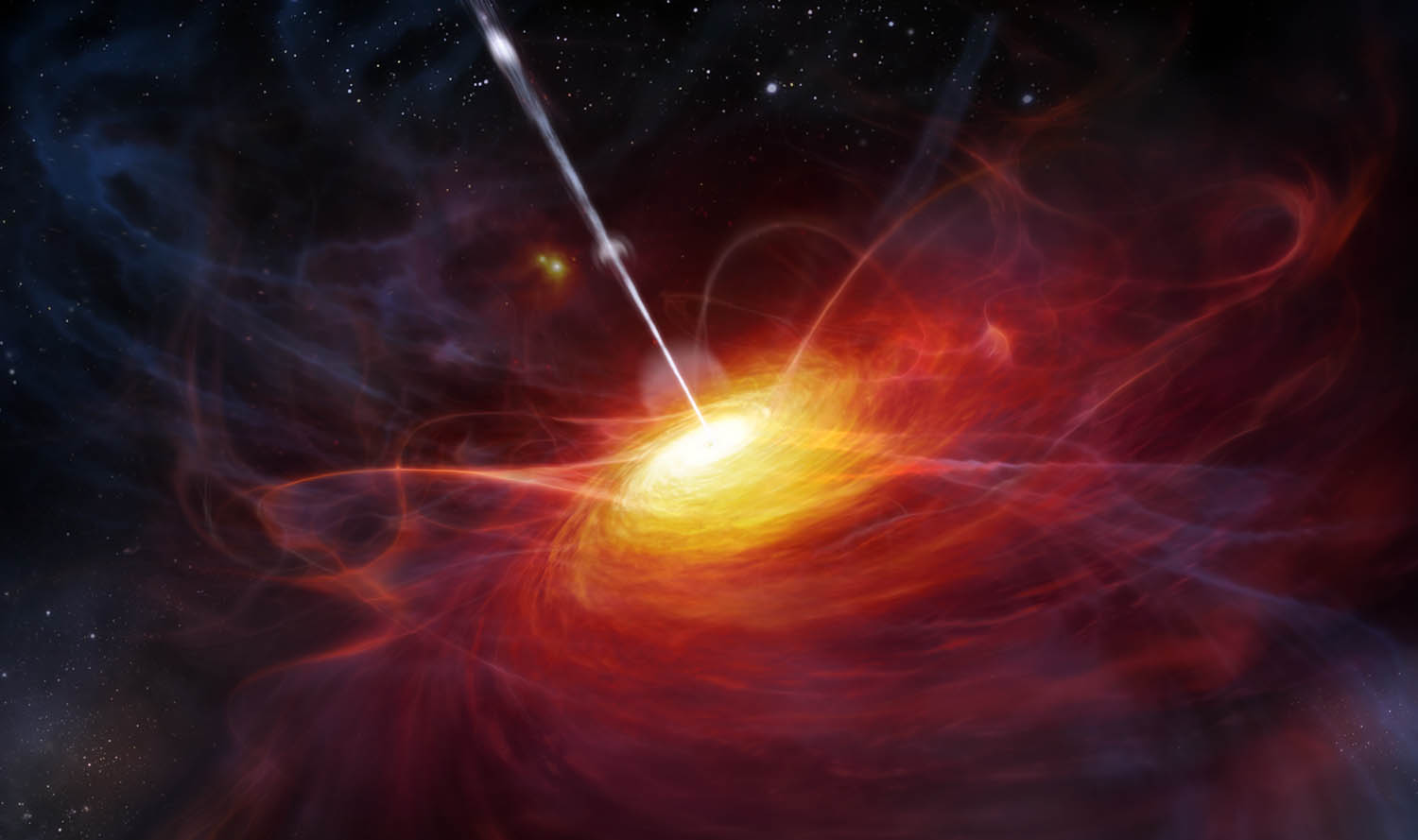NASA JPL-Caltech | Spitzer | 2012 Sep 26
NASA's Spitzer and Hubble Space Telescopes have caught sight of luminous quasars igniting after galaxies collide. Quasars are bright, energetic regions around giant, active black holes in galactic centers.
The new observations shed light on a key early period of galactic evolution when quasars and their host galaxies begin to interact, but before the two have settled down after recent galactic smashups.
"For the first time in a large sample, we are catching galactic systems when feedback between the galaxy and the quasar is still in action," said Tanya Urrutia, a postdoctoral researcher at the Leibniz Institute for Astrophysics in Potsdam, Germany and lead author of a study appearing in the Astrophysical Journal. "Quasars profoundly influence galaxy evolution and they shape the properties of the massive galaxies we see today."
Although immensely powerful and visible across billions of light years, quasars are actually quite tiny, at least compared to an entire galaxy. Quasars span a few light years, and their inner areas casting out high-velocity winds compare roughly in size only to that of our solar system. It takes a beam of light about ten hours to cross that distance. A large galaxy, however, stretches across tens of thousands of light years, or an area many millions of times larger.
"An amazing aspect of this work is that something that is happening on a very small scale can affect the host galaxy so much," said Urrutia. "To put it in context, it is a bit like if somebody playing around with a stick at the beach could affect the behavior of all the oceans in the world."
The transition of young, star-making galaxies to the old, quiet, elliptical galaxies we see in the modern Universe is strongly linked to the activity of central supermassive black holes, astronomers have learned. When galaxies merge together into a bigger galaxy, central black holes spark up as quasars, send out powerful winds and beam energy across the cosmos. The new study probes how the quasars work in altering the host galaxies' star-making abilities.
Urrutia and her team looked at 13 particularly jazzed-up quasars at a distance of about six billion light-years or so, back when the universe was a little more than half its current age. The quasars' light was reddened by the presence of lots of dust. Cosmic dust absorbs visible light and then re-emits it in longer, redder wavelengths, including the infrared light that Spitzer sees.
The dustier, redder quasars turned up in galaxies with more disturbed shapes, as revealed in observations by Hubble. This evidence pointed to those luminous quasars having been ignited by a recent major merger between two sizeable galaxies.
The astronomers also gauged how voraciously the supermassive black holes at the hearts of the quasars were feeding. In further Spitzer observations, the researchers saw that the reddest quasars most actively slurping up matter occurred in the most disturbed galaxies. In essence, Spitzer and Hubble witnessed the galaxies and quasars in a stage of co-evolution, with the state of one connected to the state of the other.
Other findings of the new study bolster theories about where this shared evolution will lead. The galactic mergers, which ignited central quasars and shrouded them in dust, also kicked off waves of star formation. Stars form from pockets of cold gas and dust, and galaxy collisions are known to trigger bursts of star birth.
Notably, the fast-feeding black holes that sport prominent quasars in the study appear to be growing still in size. Astronomers have previously established a relationship between a central black hole's mass and the brightness of a host galaxy. However, in the young quasars studied, the black holes did not turn out to be as massive as would be expected. The black holes still have some catching up to do, it seems, with the rest of the processes spurred by the merger.
As the black holes grow, high-velocity winds from these monsters will scatter the cold gas needed to create new stars. In the process, the galaxies will start to transition from star-generating youth to an old age populated by dying stars. Urrutia and her team noted winds already rushing from some of the observed galaxies' central supermassive black holes.
In the overall chronology of galactic evolution, then, it looks like waves of new star birth happen before the central holes grow and their quasars flare. "According to our results, the onset of star formation preceded the ignition of the quasar," said Urrutia. "The evolution of quasars is intimately linked with the evolution of galaxies and the formation of their stars."
Spitzer Observations of Young Red Quasars - Tanya Urrutia et al
- Astrophysical Journal 757(2) 125 (2012 Oct 01) DOI: 10.1088/0004-637X/757/2/125
arXiv.org > astro-ph > arXiv:1208.4585 > 22 Aug 2012
http://asterisk.apod.com/viewtopic.php?t=24307
